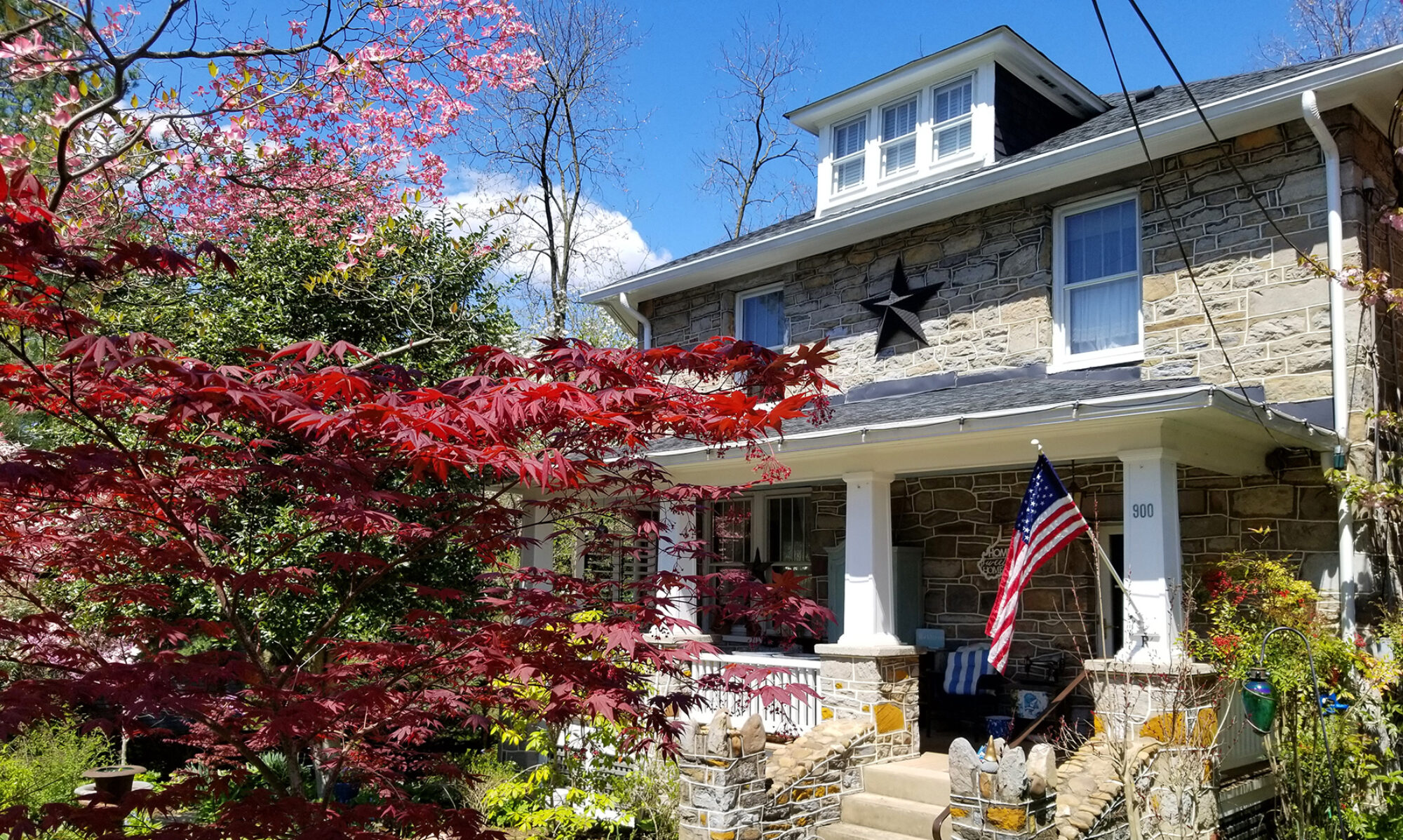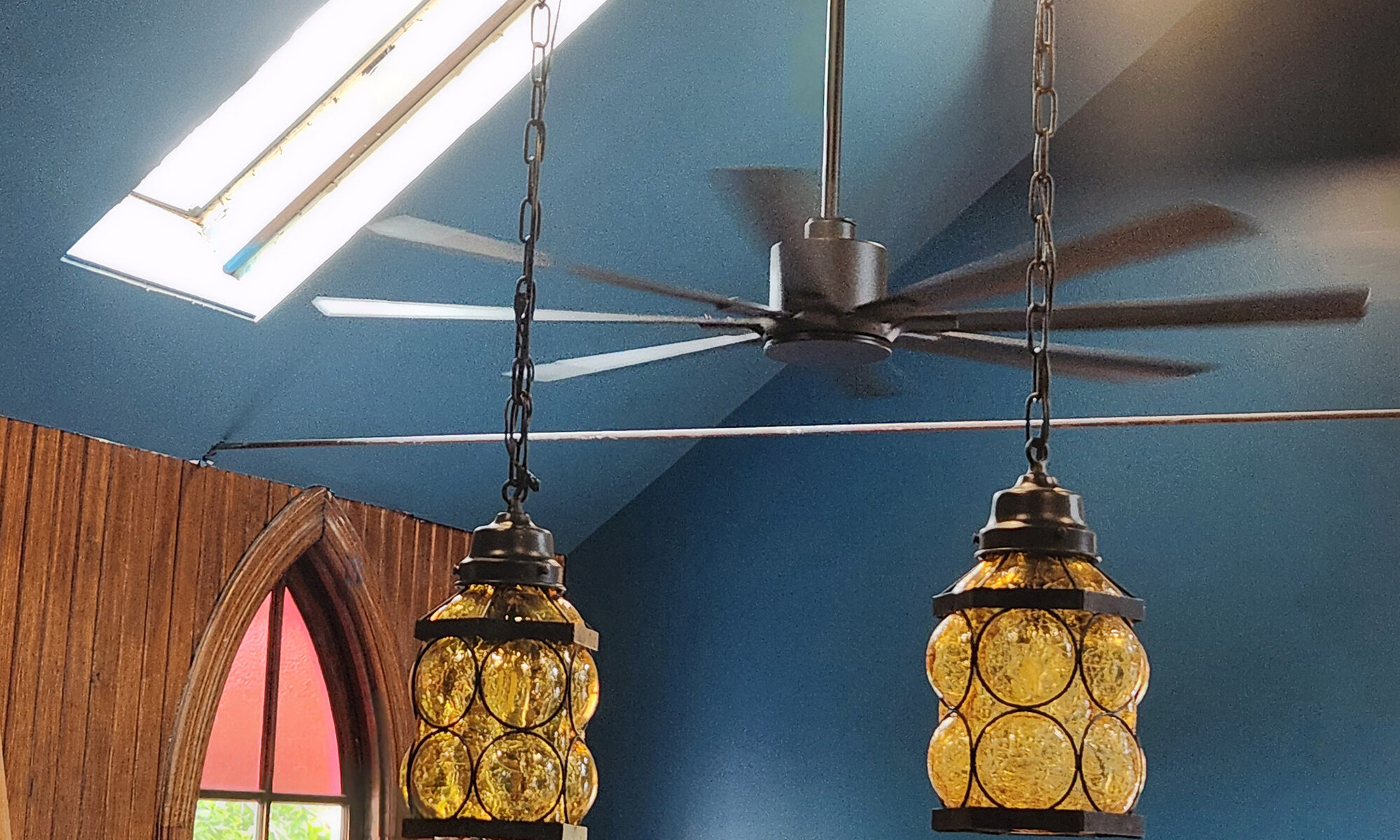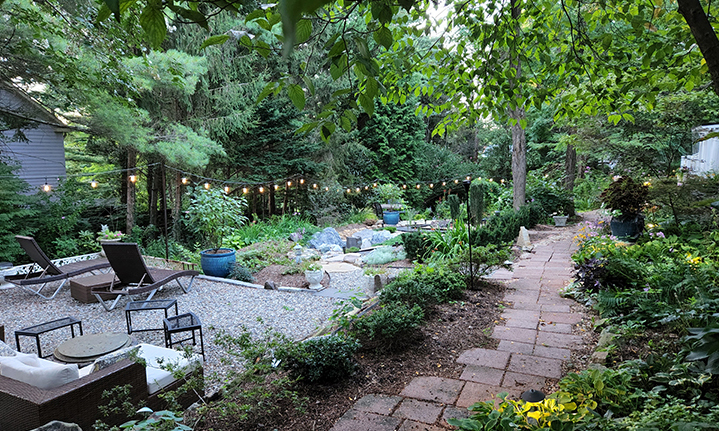Ever since we moved into this house, we’ve been trying to piece together the history of its original owners, William and Inez Saunders. As we’ve shared in past posts (here and here), the couple were both Storer College alumni and educators, and William was a distinguished member of the Storer faculty for four decades.
Since last writing about them, we have uncovered a good deal more information about William. Our first big leap forward came last June, when the grandson of Carrie Dennis visited for a night’s stay. Carrie’s husband was a plasterer who had worked on this house. They lived just across the street, and her grandson told us Carrie spent years longing to live in the big stone house.
She got her wish in 1962, when “The Prof” (as he was fondly known to the Dennis family) was in his nineties and finally ready to sell. Carrie, by then a widow, evidently moved in with much of Saunders’ furniture, books, and more still in place. More about that later…
The grandson remembers visiting here as a youth. He explained
to us the closeness of the African American neighbors living on this block at
the end of Fillmore Street in a predominantly white town – how they were all
like family, related by blood or not.
The next stage of discovery came last fall, when we received an email from Bates College writer Jay Burns. He said he had written about William (with some minor help from our own blog posts). It turns out that after completing his preparatory years at Storer in 1895 William went north to Bates for his undergraduate degree. Saunders’ choice of Bates was likely influenced by Storer founder Nathan Cook Brackett and his wife Louise, who had both attended Bates . The college had graduated its first African American in 1874.
Not only was Saunders a scholar (serving as librarian of the literary society Eurosophia), he was quite the athlete. He competed in track & field (hammer and shot put) as well as in football. In his senior year Saunders became the star of a particularly important football match-up with rival Bowdoin College. Here’s an excerpt of Burns’ article, beginning with a quote from the student newspaper:
“Time and again the giant guard, Saunders, went into the line and always for a gain,” said the Student. “Saunders played like a fiend,” reported the [Lewiston Evening] Journal. “It always took two men to bring him down.” (Though not big by today’s standards, Saunders, at 5-foot-10 and 173 pounds, was among the tallest and heaviest Bates players.)
Continue reading “Our Latest William Saunders Discoveries”









